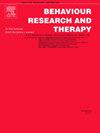The benefit and neural mechanisms of computerized inhibitory control training for insomnia with short sleep duration phenotype: a rs-fMRI study
IF 4.5
2区 心理学
Q1 PSYCHOLOGY, CLINICAL
引用次数: 0
Abstract
Background
Inhibitory control (IC) impairment is characteristic of insomnia disorder with short sleep duration (ISSD), but not with normal sleep duration (INSD). IC is critical for sleep-wake regulation. This study evaluates whether computerized IC training can improve sleep in ISSD and explores related neural mechanisms using resting-state fMRI (rs-fMRI).
Methods
Twenty ISSD patients participated in a three-week computerized IC training program (15 sessions), alongside a control group of 17 participants. Sleep quality was assessed using the Pittsburgh Sleep Quality Index (PSQI) and the Insomnia Severity Index (ISI), complemented by objective measures from overnight EEG recordings. Neuroimaging analyses focused on changes in regional homogeneity (ReHo), fractional amplitude of low-frequency fluctuations (fALFF), and functional connectivity (FC) in brain regions associated with IC.
Results
Computerized IC training led to significant improvements in both subjective and objective sleep quality, demonstrated by reductions in PSQI and ISI scores, as well as decreased wake time during sleep. Neuroimaging revealed increased ReHo in the left medial orbitofrontal cortex (MOFC), elevated fALFF in the right middle frontal gyrus (MFG), and enhanced FC between the MOFC and the right rectus gyrus (RG), which correlated with improvements in sleep measures.
Conclusion
Computerized IC training appears to be an effective intervention for improving sleep in ISSD, likely by inducing functional changes in prefrontal cortex regions. These findings underscore the potential of IC-targeted treatments for ISSD and highlight the need for future research to evaluate the long-term effects of such interventions.
Trial registration
The study was prospectively registered on May 30, 2024, in Chinese Clinical Trials registry (ChiCTR2400085063).
计算机抑制控制训练对睡眠时间短的失眠症的益处和神经机制:一项rs-fMRI研究
背景:抑制控制(IC)障碍是短睡眠时间(ISSD)失眠障碍的特征,而不是正常睡眠时间(INSD)失眠障碍的特征。IC对睡眠-觉醒调节至关重要。本研究评估计算机化IC训练是否可以改善ISSD患者的睡眠,并利用静息状态功能磁共振成像(rs-fMRI)探讨相关的神经机制。方法20例ISSD患者参加了为期3周的计算机化IC培训计划(15次),对照组17例。采用匹兹堡睡眠质量指数(PSQI)和失眠严重程度指数(ISI)评估睡眠质量,并辅以夜间脑电图记录的客观测量。神经影像学分析的重点是与IC相关的大脑区域的区域均匀性(ReHo)、低频波动分数幅度(fALFF)和功能连通性(FC)的变化。结果计算机化IC训练导致主观和客观睡眠质量的显著改善,PSQI和ISI评分的降低证明了这一点,以及睡眠期间清醒时间的减少。神经影像学显示,左内侧眶额皮质(MOFC)的ReHo增加,右中额回(MFG)的fALFF升高,MOFC和右直回(RG)之间的FC增强,这与睡眠测量的改善相关。结论计算机化IC训练似乎是改善ISSD患者睡眠的有效干预措施,可能通过诱导前额叶皮质区域的功能改变。这些发现强调了ic靶向治疗ISSD的潜力,并强调了未来研究评估此类干预措施的长期效果的必要性。试验注册该研究于2024年5月30日在中国临床试验注册中心(ChiCTR2400085063)前瞻性注册。
本文章由计算机程序翻译,如有差异,请以英文原文为准。
求助全文
约1分钟内获得全文
求助全文
来源期刊

Behaviour Research and Therapy
PSYCHOLOGY, CLINICAL-
CiteScore
7.50
自引率
7.30%
发文量
148
期刊介绍:
The major focus of Behaviour Research and Therapy is an experimental psychopathology approach to understanding emotional and behavioral disorders and their prevention and treatment, using cognitive, behavioral, and psychophysiological (including neural) methods and models. This includes laboratory-based experimental studies with healthy, at risk and subclinical individuals that inform clinical application as well as studies with clinically severe samples. The following types of submissions are encouraged: theoretical reviews of mechanisms that contribute to psychopathology and that offer new treatment targets; tests of novel, mechanistically focused psychological interventions, especially ones that include theory-driven or experimentally-derived predictors, moderators and mediators; and innovations in dissemination and implementation of evidence-based practices into clinical practice in psychology and associated fields, especially those that target underlying mechanisms or focus on novel approaches to treatment delivery. In addition to traditional psychological disorders, the scope of the journal includes behavioural medicine (e.g., chronic pain). The journal will not consider manuscripts dealing primarily with measurement, psychometric analyses, and personality assessment.
 求助内容:
求助内容: 应助结果提醒方式:
应助结果提醒方式:


